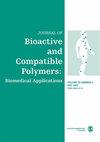探究以骨髓干细胞为种子的鱼腥草提取物纳米纤维支架对糖尿病伤口愈合的疗效:临床前研究
IF 2.2
4区 生物学
Q3 BIOTECHNOLOGY & APPLIED MICROBIOLOGY
引用次数: 0
摘要
目的:本研究的目的是利用电纺丝技术,研究在聚己内酯/明胶支架中加入簕杜鹃提取物治疗大鼠糖尿病伤口的潜力。方法:使用各种检测方法对支架进行体外表征,包括抗炎检测、微观结构研究、DPPH自由基清除检测、细胞活力检测、血液相容性检测和细菌渗透检测。结果:体外研究结果表明,制备的支架具有纳米纤维性、抗氧化性和对皮肤细胞无毒性。体内研究表明,与其他组相比,干细胞和鱼腥草提取物负载支架的伤口闭合率和组织形态学参数最高。此外,基因表达研究表明,所开发的伤口敷料增加了血管内皮生长因子基因的表达,减少了谷胱甘肽过氧化物酶基因的表达。本文章由计算机程序翻译,如有差异,请以英文原文为准。
Exploring the efficacy of catha edulis extract-loaded nanofibrous scaffolds seeded with bone marrow-derived stem cells for diabetic wound healing: A preclinical investigation
Objectives:The aim of this study was to investigate the potential of incorporating catha edulis extract into polycaprolacton/gelatin scaffolds using electrospinning technique for the treatment of diabetic wounds in a rat model.Methods:The in vitro characterization of the scaffolds was performed using various assays, including anti-inflammatory assay, microstructure study, DPPH radical scavenging assay, cell viability assay, hemocompatibility assay, and bacterial penetration assays. The scaffolds were then seeded with bone marrow-derived stem cells and cultured before implantation into the rat model.Results:The results of the in vitro study showed that the produced scaffolds were nanofibrous, antioxidative, and non-toxic to skin cells. In vivo study demonstrated that the stem cell and catha edulis extract-loaded scaffolds had the highest rate of wound closure and histomorphometric parameters compared to other groups. Moreover, gene expression studies showed that the developed wound dressings increased the expression of VEGF gene and reduced the expression of glutathione peroxidase gene.Conclusion:These findings suggest that the catha edulis extract-loaded polycaprolacton/gelatin scaffolds could be a promising therapeutic option for diabetic wounds.
求助全文
通过发布文献求助,成功后即可免费获取论文全文。
去求助
来源期刊

Journal of Bioactive and Compatible Polymers
工程技术-材料科学:生物材料
CiteScore
3.50
自引率
0.00%
发文量
27
审稿时长
2 months
期刊介绍:
The use and importance of biomedical polymers, especially in pharmacology, is growing rapidly. The Journal of Bioactive and Compatible Polymers is a fully peer-reviewed scholarly journal that provides biomedical polymer scientists and researchers with new information on important advances in this field. Examples of specific areas of interest to the journal include: polymeric drugs and drug design; polymeric functionalization and structures related to biological activity or compatibility; natural polymer modification to achieve specific biological activity or compatibility; enzyme modelling by polymers; membranes for biological use; liposome stabilization and cell modeling. This journal is a member of the Committee on Publication Ethics (COPE).
 求助内容:
求助内容: 应助结果提醒方式:
应助结果提醒方式:


